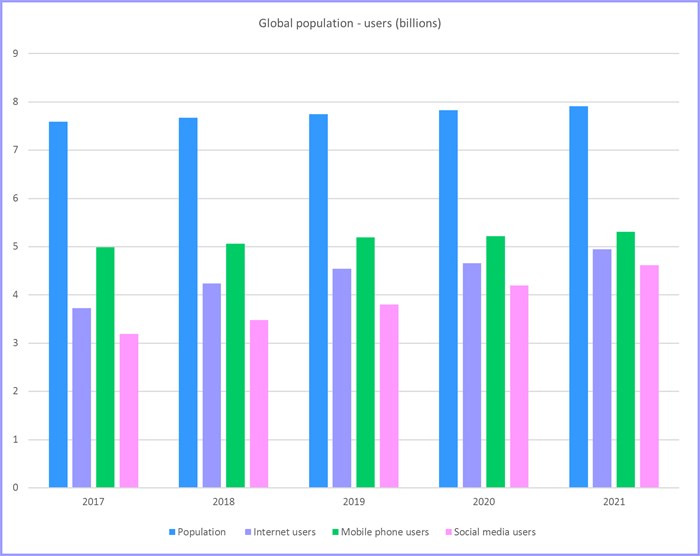Top stories
![Today, Halo and Demographica announce a new specialist agency, Second Rodeo]], headed up by Mike Stopforth (left). Dean Oelschig, managing partner and founder of Halo (right) says they will work as a group but ultimately, each agency will be an individual specialist](https://biz-file.com/c/2505/772543-300x156.jpg?2)


Marketing & MediaHow Spar is using localised marketing to redefine the urban retail experience
Karabo Ledwaba 1 day



More news





ESG & Sustainability
How South Africa’s conservation efforts can thrive with Indian partnership










Time spent per day on media use by internet users aged 16-64 is a key dataset an worldwide this number continues to climb. This year it is at six hours and 58 minutes worldwide - up one percent, year-on-year (Y-o-Y).
However, this is well down on 2016’s Y-o-Y +4.4% and on 2019’s Y-o-Y +4%.
This is according to the annual data on the Digital 2022 Global Overview Report published in partnership between We Are Social and Hootsuite and there’s plenty to get our heads around.

According to Simon Kemp of Kepios, “The number of people around the world who don’t use the Internet has just fallen below the three billion mark. This momentous milestone means that we’re edging ever closer to universal accessibility… with the global user figure tantalisingly closer to five billion.”
However, there are big differences in adoption rates (as a percentage of population) per country. Denmark, Iceland, UAE and South Korea are at 99% but then North Korea is at 0.1%, and, overall, the growth continues to slow and is well down on the +11.7% gain made in 2011.
This is understandable, as many countries have already reached the realistic saturation point - 94% of total population in Western Europe and Northern Europe - so most of their future growth will come from new population. It is a different story in Africa, where the penetration ranges from 24% in Central Africa to 66% in Southern Africa. So there’s still plenty of room for growth in internet penetration on the continent.
There is wide variety in Africa:
Mobile phone users are up from 5.22 billion (66.6%) in 2020 to 5.31 billion (67.1%) in 2021. The Y-o-Y growth was +95 million or +1.7%. (Social media is a huge subject on its own, so it is not included here.)